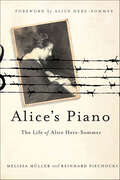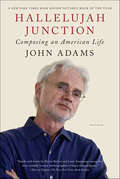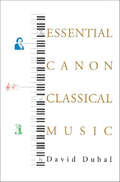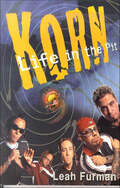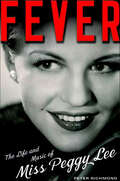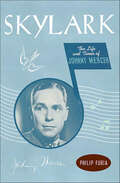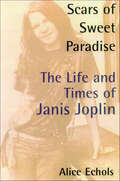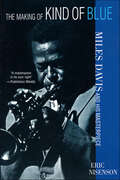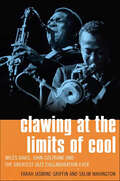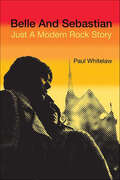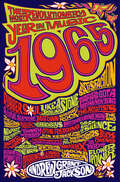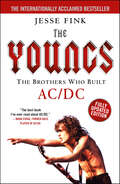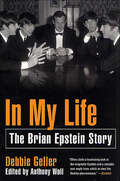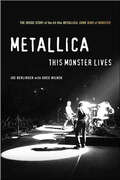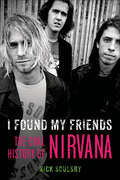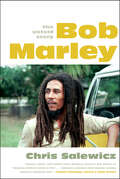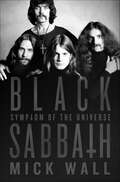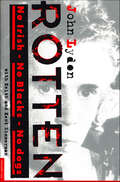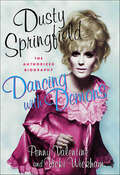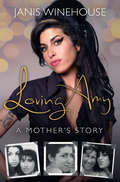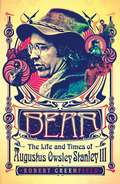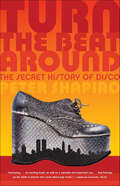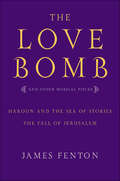- Table View
- List View
Alice's Piano: The Life of Alice Herz-Sommer
by Melissa Müller Reinhard PiechockiHow music provided hope in one of the world's darkest times—the inspirational life story of Alice Herz-Sommer, the oldest living Holocaust survivorAlice Herz-Sommer was born in Prague in 1903. A talented pianist from a very early age, she became famous throughout Europe; but, as the Nazis rose to power, her world crumbled. In 1942, her mother was deported to the Theresienstadt concentration camp and vanished. In 1943, Alice, her husband and their six-year-old son were sent there, too. In the midst of horror, music, especially Chopin's Etudes, was Alice's salvation. Theresienstadt was a "show camp", a living slice of Nazi propaganda created to convince outsiders that the Jews were being treated humanely. In more than a hundred concerts, Alice gave her fellow prisoners hope in a time of suffering. Written with the cooperation of Alice Herz-Sommer, Melissa Müller and Reinhard Piechocki's Alice's Piano is the first time her story has been told. At 107 years old, she continues to play her piano in London and bring hope to many.
Hallelujah Junction: Composing an American Life
by John AdamsJohn Adams is one of the most respected and loved of contemporary composers, and "he has won his eminence fair and square: he has aimed high, he has addressed life as it is lived now, and he has found a language that makes sense to a wide audience" (Alex Ross, The New Yorker). Now, in Hallelujah Junction, he incisively relates his life story, from his childhood to his early studies in classical composition amid the musical and social ferment of the 1960s, from his landmark minimalist innovations to his controversial "docu-operas." Adams offers a no-holds-barred portrait of the rich musical scene of 1970s California, and of his contemporaries and colleagues, including John Cage, Steve Reich, and Philip Glass. He describes the process of writing, rehearsing, and performing his renowned works, as well as both the pleasures and the challenges of writing serious music in a country and a time largely preoccupied with pop culture.Hallelujah Junction is a thoughtful and original memoir that will appeal to both longtime Adams fans and newcomers to contemporary music. Not since Leonard Bernstein's Findings has an eminent composer so candidly and accessibly explored his life and work. This searching self-portrait offers not only a glimpse into the work and world of one of our leading artists, but also an intimate look at one of the most exciting chapters in contemporary culture.
The Essential Canon of Classical Music
by David DubalThe ultimate guide to classical composers and their music-for both the novice and the experienced listenerMusic, according to Aaron Copland, can thrive only if there are "gifted listeners." But today's listeners must choose between classical and rock, opera and rap, and the choices can seem overwhelming at times. In The Essential Canon of Classical Music, David Dubal comes to the aid of the struggling listener and provides a cultural-literacy handbook for classical music. Dubal identifies the 240 composers whose works are most important to an understanding of classical music and offers a comprehensive, chronological guide to their lives and works. He has searched beyond the traditional canon to introduce readers to little-known works by some of the most revered names in classical music-Bach, Haydn, Mozart, Schubert-as well as to the major works of lesser-known composers. In a spirited and opinionated voice, Dubal seeks to rid us of the notion of "masterpieces" and instead to foster a new generation of master listeners. The result is an uncommon collection of the wonders classical music has to offer.
Korn: Life in the Pit
by Leah FurmanIn the past eight-years, the face of popular culture has changed radically and with it, the music that will define the decade. Gone are the pop saturated songs of the 70's and 80's. Today's sound is a fusion of grunge, hip-hop, metal, hardcore and funk. Disparate sounds that together create something thoroughly modern and unlike anything we've heard before. No band embodies this musical melting pot more than Korn. With their frantic, no-holds-barred image and sound, Korn has jumped musical boundaries to be both Billboard chart toppers and a band with a loyal, obsessive following. --Their debut album, "Korn" went platinum and has sold millions--"Life is Peachy" debuted at number three on the Billboard charts--Korn's latest album, "Follow the Leader" has sold over two million copies and remained on the Billboard charts for over twenty-eight weeks. Elina Furman's in-depth look at the band's meager beginings to their breakthrough success with "Follow the Leader," their current multi-platinum album is a fan's ultimate guide.
Fever: The Life and Music of Miss Peggy Lee
by Peter RichmondThe first major biography of the legendary singer—an enthralling accountof a charismatic artist moving through the greatest, most glamorous era of American music "I learned courage from Buddha, Jesus, Lincoln, and Mr. Cary Grant." So said Peggy Lee, the North Dakota girl who sang like she'd just stepped out of Harlem. Einstein adored her; Duke Ellington dubbed her "the Queen." With her platinum cool and inimitable whisper she sold twenty million records, made more money than Mickey Mantle, and along with pals Frank Sinatra and Bing Crosby presided over music's greatest generation. Yet beneath the diamonds she was still Norma Delores Egstrom, insecure and always looking for acceptance. Drawing on exclusive interviews and new information, Peter Richmond delivers a complex, compelling portrait of an artist and an era that begins with a girl plagued by loss, her father's alcoholism, and her stepmother's abuse. One day she gets on a train hoping her music will lead her someplace better. It does—to a new town and a new name; to cities and clubs where a gallery of brilliant innovators are ushering in a brand-new beat; to four marriages, a daughter, Broadway, Vegas, and finally Hollywood. Richmond traces how Peggy rose, right along with jazz itself, becoming an unstoppable hit-maker ("Fever," "Mañana," "Is That All There Is?"). We see not only how this unforgettable star changed the rhythms of music, but also how—with her drive to create, compose, and perform—she became an artist whose style influenced k.d. lang, Nora Jones, and Diana Krall. Fever brings the lady alive again—and makes her swing.
Skylark: The Life and Times of Johnny Mercer
by Philip FuriaSkylark is the story of the tormented but glorious life and career of Johnny Mercer, and the first biography of this enormously popular and influential lyricist. Raised in Savannah, Mercer brought a quintessentially southern style to both his life in New York and to his lyrics, which often evoked the landscapes and mood of his youth ("Moon River", "In the Cool, Cool, Cool of the Evening"). Mercer also absorbed the music of southern blacks--the lullabies his nurse sang to him as a baby and the spirituals that poured out of Savannah's churches-and that cool smooth lyrical style informed some of his greatest songs, such as "That Old Black Magic".Part of a golden guild whose members included Cole Porter and Irving Berlin, Mercer took Hollywood by storm in the midst of the Great Depression. Putting words to some of the most famous tunes of the time, he wrote one hit after another, from "You Must Have Been a Beautiful Baby" to "Jeepers Creepers" and "Hooray for Hollywood." But it was also in Hollywood that Mercer's dark underside emerged. Sober, he was a kind, generous and at times even noble southern gentleman; when he drank, Mercer tore into friends and strangers alike with vicious abuse. Mercer's wife Ginger, whom he'd bested Bing Crosby to win, suffered the cruelest attacks; Mercer would even improvise cutting lyrics about her at parties.During World War II, Mercer served as Americas's troubadour, turning out such uplifting songs as "My Shining Hour" and "Ac-cent-tchu-ate the Positive." He also helped create Capitol Records, the first major West Coast recording company, where he discovered many talented singers, including Peggy Lee and Nat King Cole. During this period, he also began an intense affair with Judy Garland, which rekindled time and again for the rest of their lives. Although they never found happiness together, Garland became Mercer's muse and inspired some of his most sensuous and heartbreaking lyrics: "Blues in the Night," "One for My Baby," and "Come Rain or Come Shine."Mercer amassed a catalog of over a thousand songs and during some years had a song in the Top Ten every week of the year--the songwriting equivalent of Joe DiMaggio's hitting streak--but was plagued by a sense of failure and bitterness over the big Broadway hit that seemed forever out of reach.Based on scores of interviews with friends, family and colleagues, and drawing extensively on Johnny Mercer's letters, papers and his unpublished autobiography, Skylark is an important book about one of the great and dramatic characters in 20th century popular music.
Scars of Sweet Paradise: The Life and Times of Janis Joplin
by Alice EcholsJanis Joplin was the skyrocket chick of the sixties, the woman who broke into the boys' club of rock and out of the stifling good-girl femininity of postwar America. With her incredible wall-of-sound vocals, Joplin was the voice of a generation, and when she OD'd on heroin in October 1970, a generation's dreams crashed and burned with her. Alice Echols pushes past the legary Joplin-the red-hot mama of her own invention-as well as the familiar portrait of the screwed-up star victimized by the era she symbolized, to examine the roots of Joplin's muscianship and explore a generation's experiment with high-risk living and the terrible price it exacted.A deeply affecting biography of one of America's most brilliant and tormented stars, Scars of Sweet Paradise is also a vivid and incisive cultural history of an era that changed the world for us all.
The Making of Kind of Blue: Miles Davis and His Masterpiece
by Eric NisensonFrom the moment it was recorded more than 40 years ago, Miles Davis's Kind of Blue was hailed as a jazz classic. To this day it remains the bestselling jazz album of all time, embraced by fans of all musical genres. The album represented a true watershed moment in jazz history, and helped to usher in the first great jazz revolution since bebop.The Making of Kind of Blue is an exhaustively researched examination of how this masterpiece was born. Recorded with pianist Bill Evans, tenor saxophonist John Coltrane, composer/theorist George Russell and Miles himself, the album represented a fortuitous conflation of some of the real giants of the jazz world, at a time when they were at the top of their musical game. The end result was a recording that would forever change the face of American music.Through extensive interviews and access to rare recordings Nisenson pieced together the whole story of this miraculous session, laying bare the genius of Miles Davis, other musicians, and the heart of jazz itself.
Clawing at the Limits of Cool: Miles Davis, John Coltrane and the Greatest Jazz Collaboration Ever
by Farah Jasmine Griffin Salim WashingtonWhen the renowned trumpeter and bandleader Miles Davis chose the members of his quintet in 1955, he passed over well-known, respected saxophonists such as Sonny Rollins to pick out the young, still untested John Coltrane. What might have seemed like a minor decision at the time would instead set the course not just for each of their careers but for jazz itself. Clawing at the Limits of Cool is the first book to focus on Davis and Coltrane's musical interaction and its historical context, on the ways they influenced each other and the tremendous impact they've had on culture since then. It chronicles the drama of their collaboration, from their initial historic partnership to the interlude of their breakup, during which each man made tremendous progress toward his personal artistic goals. And it continues with the last leg of their journey together, a time when the Miles Davis group, featuring John Coltrane, forever changed the landscape of jazz. Authors Farah Jasmine Griffin and Salim Washington examine the profound implications that the Davis/Coltrane collaboration would have for jazz and African American culture, drawing parallels to the changing standards of African American identity with their public personas and private difficulties. With vastly different personal and musical styles, the two men could not have been more different. One exemplified the tough, closemouthed cool of the fifties while the other made the transition during this time from unfocused junkie to a religious pilgrim who would inspire others to pursue spiritual enlightenment in the coming decade. Their years together mark a watershed moment, and Clawing at the Limits of Cool draws on both cultural history and precise musical detail to illuminate the importance that their collaboration would have for jazz and American history as a whole.
Belle and Sebastian: Just A Modern Rock Story
by Paul WhitelawIn the years since their first release, Belle and Sebastian have grown from a secretive cult concern into one of the most beloved and revered pop'n'roll bands in the world. Intelligent and sensitive, witty and original, beautiful and bold, their music inspires the kind of devotion not seen since The Smiths. Their continuing desire to push the boundaries of their vision has resulted in some of the most essential and idiosyncratic records of recent times. In this, the first biography of Belle and Sebastian, Paul Whitelaw traces their unpredictable personal and creative curve. With all original interviews and personal photos from the band Belle and Sebastian:Just A Modern Rock Story is the definitive account of the clandestine world and continuing rise of the unique and fascinating musical phenomenon that is Belle and Sebastian.
1965: The Most Revolutionary Year in Music
by Andrew Grant JacksonA lively chronicle of the year that shaped popular music forever! Fifty years ago, friendly rivalry between musicians turned 1965 into the year rock evolved into the premier art form of its time and accelerated the drive for personal freedom throughout the Western world.The Beatles made their first artistic statement with Rubber Soul. Bob Dylan released "Like a Rolling Stone, arguably the greatest song of all time, and went electric at the Newport Folk Festival. The Rolling Stones's "Satisfaction" catapulted the band to world-wide success. New genres such as funk, psychedelia, folk rock, proto-punk, and baroque pop were born. Soul music became a prime force of desegregation as Motown crossed over from the R&B charts to the top of the Billboard Hot 100. Country music reached new heights with Nashville and the Bakersfield sound. Musicians raced to innovate sonically and lyrically against the backdrop of seismic cultural shifts wrought by the Civil Rights Movement, Vietnam, psychedelics, the Pill, long hair for men, and designer Mary Quant’s introduction of the miniskirt.In 1965, Andrew Grant Jackson combines fascinating and often surprising personal stories with a panoramic historical narrative.
The Youngs: The Brothers Who Built AC/DC
by Jesse FinkThe Youngs: The Brothers Who Built AC/DC is unlike any AC/DC book you've read before. Less a biography, more a critical appreciation, it tells the story of the trio through 11 classic rock songs and reveals some of the personal and creative secrets that went into their making.Important figures from AC/DC's long way to the top open up for the very first time, while unsung heroes behind the band's success are given the credit they are due. Accepted accounts of events are challenged while sensational new details emerge to cast a whole new light on the band's history—especially their early years with Atlantic Records in the United States. Former AC/DC members and musicians from bands such as Guns N' Roses, Dropkick Murphys, Airbourne and Rose Tattoo also give their take on the Youngs' brand of magic.Their music has never pulled its punches. Neither does The Youngs. After 40 years, AC/DC might just have gotten the serious book it deserves.
In My Life: The Brian Epstein Story
by Debbie GellerWithout the determination, magnetism, vision, good manners, respectable clothes and financial security of Brian Epstein, no one would ever have heard of John, Paul, George, and Ringo. In Liverpool, in December 1961, Brian Epstein met the Beatles in his small office and signed a management deal. The rest may be history, but it's a history that Epstein created, along with a blueprint for all pop groups since.Out of the public eye, Epstein was flamboyant and charismatic. He drank, gambled compulsively and took drugs to excess. But people remember his wit, charm and capacity to inspire affection and loyalty. That's when he wasn't depressed, even suicidal. Epstein was Jewish in a society filled with anti-Semitism. He was homosexual at a time when it was a crime to be gay, and from his teenage days to the end of his life he suffered arrests, beatings and blackmail--all of which had to be kept secret.In In My Life: The Brian Epstein Story, Debbie Geller tells the story of Epstein's complicated life through the reminiscences of his friends and family. Based on dozens of interviews--with Paul McCartney, George Martin and Marianne Faithfull, among others--plus many of Epstein's personal diaries, this book uncovers the truth behind the enigmatic young man who unintentionally caused a cultural revolution--and in the process destroyed himself.
Metallica: This Monster Lives
by Joe Berlinger Greg MilnerMetallica is one of the most successful hard-rock bands of all time, having sold more than ninety million albums worldwide. Receiving unique, unfettered access, acclaimed filmmakers Joe Berlinger and Bruce Sinofsky followed Metallica over two and a half years as they faced monumental personal and professional challenges that threatened to destroy the bands just as they returned to the studio to record their first album in four years. While the documentary itself provides an insider's view of Metallica, the two and a half years of production (and more than 1,600 hours of footage) garnered far more than can be expressed in a two-hour film.Berlinger's book about the experience reveals the stories behind the film, capturing the energy, uncertainty, and ultimate triumph of both the filming and Metallica's bid for survival. It weaves the on-screen stories together with what happened off-screen, offering intimate details of the band's struggle amidst personnel changes, addiction, and controversy. In part because Berlinger was one of the only witnesses to the intensive group-therapy sessions and numerous band meetings, his account of his experience filming the band is the most honest and deeply probing book about Metallica - or any rock band - ever written.This is the book both Metallica and film fans have dreamed of - a stark and honest look at one of rock's most important bands through the eyes of the most provocative documentary filmmakers working today.
I Found My Friends: The Oral History of Nirvana
by Nick SoulsbyI Found My Friends recreates the short and tempestuous times of Nirvana through the musicians and producers who played and interacted with the band. The guides for this trip didn't just watch the life of this legendary band—they lived it. Soulsby interviewed over 150 musicians from bands that played and toured with Nirvana, including well-known alternative and grunge bands like Dinosaur Jr., The Dead Kennedys, and Butthole Surfers, as well as scores of smaller, but no less fascinating bands.In this groundbreaking look at a legendary band, readers will see a more personal history of Nirvana than ever before, including Nirvana's consideration of nearly a dozen previously unmentioned candidates for drummer before settling on David Grohl, a recounting of Nirvana's famously disastrous South American shows from never-before-heard sources on Brazilian and Argentine sides, and the man who hosted the first ever Nirvana gig's recollections of jamming with the band at that inaugural event.I Found My Friends relives Nirvana's meteoric rise from the days before the legend to through their increasingly damaged superstardom. More than twenty years after Kurt Cobain's tragic death, Nick Soulsby removes the posthumous halo from the brow of Kurt Cobain and travels back through time to observe one of rock and roll‘s most critical bands as no one has ever seen them before.
Bob Marley: The Untold Story
by Chris SalewiczWhat was it about Bob Marley that made him so popular in a world dominated by rock 'n' roll? How is it that he not only has remained the single most successful reggae artist ever, but also has become a shining beacon of radicalism and peace to generation after generation of fans? The man who introduced reggae to a worldwide audience, Marley was a hero figure in the classic, mythological sense. From immensely humble beginnings, with talent and religious belief his only weapons, the Jamaican recording artist applied himself with unstinting perseverance to spreading his prophetic musical message across the globe. In 1980, on tour, Bob Marley and the Wailers played to the largest audiences a musical act had ever experienced in Europe. Less than a year later, Marley would die, only thirty-six years old. Sales of Marley's albums before his death were spectacular; in the years since he died, they have been phenomenal. Chris Salewicz, the bestselling author of Redemption Song, the classic biography of Joe Strummer, interviewed Bob Marley in Jamaica in 1979. Now, for the first time, in this thorough, detailed account of Marley's life and the world in which he grew up and which he came to dominate, Salewicz brings to life not only the Rastafari religion and the musical scene in Jamaica, but also the spirit of the man himself. Interviews with dozens of people who knew Marley and have never spoken before are woven through the narrative as Salewicz seeks to explain why Marley has become such an enigmatic and heroic figure, loved by millions all over the world.
Black Sabbath: Symptom of the Universe
by Mick WallDecades before reality television was invented, Ozzy Osbourne was subversive and dark. Ozzy was the singer in the heavy metal band Black Sabbath, and they meant business. In an era when rock bands were measured by how 'heavy' they were, no one was weightier than Black Sabbath. All four founding members of the original Black Sabbath grew up within half-a-mile of each other in a tiny Birmingham suburb. Though all shared a deep love of music--The Beatles for Ozzy, the Mothers of Invention for Geezer, the Shadows and Chet Atkins for Iommi, and Gene Kruppa for Ward— they formed their group "as the quickest way out of the slums." This is the story of how they made that dream come true--and how it then turned into a nightmare for all of them. At the height of their fame, Sabbath discovered they'd been so badly ripped off by their managers they didn't even own their own songs. They looked for salvation from Don Arden—an even more notorious gangster figure, who resurrected their career but still left them indebted to him, financially and personally. It finally came to a head when in 1979 they sacked Ozzy: "For being too out of control--even for us," as Bill Ward put it. The next fifteen years were a war between the post-Ozzy Sabbath and Ozzy himself, whose solo career overshadowed Sabbath so much that a reunion was entirely on his terms. Or rather, those of his wife and manager—to add a further bitter twist for Sabbath, daughter of Don Arden —Sharon Osbourne.
Rotten: No Irish, No Blacks, No Dogs
by John Lydon Keith Zimmerman Kent Zimmerman"I have no time for lies and fantasy, and neither should you. Enjoy or die..." --John LydonPunk has been romanticized and embalmed in various media. An English class revolt that became a worldwide fashion statement, punk's idols were the Sex Pistols, and its sneering hero was Johnny Rotten.Seventeen years later, John Lydon looks back at himself, the Sex Pistols, and the "no future" disaffection of the time. Much more than just a music book, Rotten is an oral history of punk: angry, witty, honest, poignant, crackling with energy. Malcolm McLaren, Sid Vicious, Chrissie Hynde, Billy Idol, London and England in the late 1970s, the Pistols' creation and collapse...all are here, in perhaps the best book ever written about music and youth culture, by one of its most notorious figures.
Dusty Springfield: The Authorized Biography
by Penny Valentine Vicki WickhamDusty Springfield led a tragic yet inspiring life, battling her way to the top of the charts and into the hearts of music fans world-wide. Her signature voice made songs such as "I Only Want to Be with You," "Son of a Preacher Man," and "You Don't Have to Say You Love Me," international hits. In Dancing with Demons, two of her closest friends, Valentine and Wickham, capture, with vivid memories and personal anecdotes, a Dusty most people never glimpsed in this no-holds-barred yet touching portrait of one of the world's true grand dames of popular music.
Chapter and Verse
by Bernard SumnerBernard Sumner pioneered the post-punk movement when he broke onto the scene as a founding member of Joy Division, and later as the front man of New Order. Heavily influencing U2 and The Cure while paving the way for post-punk revivalists like Interpol, Sumner's has left an indelible mark on punk and rock music that endures to this day.Famously reluctant to speak out, for the first time Sumner tell his story, a vivid and illuminating account of his childhood in Manchester, the early days of Joy Division, and the bands subsequent critical and popular successes. Sumner recounts Ian Curtis' tragic death on the eve of the band's first American tour, the formation of breakout band New Order, and his own first-hand account of the ecstasy and the agony of the 1970s Manchester music scene.Witty, fascinating and surprisingly moving, Chapter and Verse is an account of insights and spectacular personal revelations, including an appendix containing a complete transcript of a recording made of Ian Curtis experiencing hypnotic regression under the Sumner's amateur guidance and tensions between himself and former band member Peter Hook.
Loving Amy
by Janis Winehouse"Amy was one of those rare people who made an impact . . . She was a bundle of emotions, at times adorable and at times unbearable. . . . Amy's passing did not follow a clear line. It was jumbled, and her life was unfinished--not life's natural order at all. She left no answers, only questions, and in the years since her death I've found myself trying to make sense of the frayed ends of her extraordinary existence." Arguably the most gifted artist of her generation, Amy Winehouse died tragically young, aged just twenty-seven. With a worldwide fan base and millions of record sales to her name, she should have had the world at her feet. Yet in the years prior to her death, she battled with addiction and was frequently the subject of lurid tabloid headlines.Amy's mother, Janis, knew her in a way that no one else did. In this warm, poignant, and at times heartbreaking memoir, she tells the full story of the daughter she loved so much. As the world watched the rise of a superstar, then the free fall of an addict to her tragic death, Janis simply saw her Amy: the daughter she'd given birth to, the girl she'd raised and stood by despite her unruly behavior, the girl whose body she was forced to identify two days after her death--and the girl she's grieved for every day since. Including rare photographs and extracts from Amy's childhood journals, Loving Amy offers a new and intimate perspective on the life and untimely death of a musical icon.
Bear: The Life and Times of Augustus Owsley Stanley III
by Robert GreenfieldThe creator of the dancing bear logo and designer of the Wall of Sound for the Grateful Dead, Augustus Owsley Stanley III, better known by his nickname, Bear, was one of the most iconic figures in the cultural revolution that changed both America and the world during the 1960s.Owsley's high octane rocket fuel enabled Ken Kesey and his Merry Pranksters to put on the Acid Tests. It also powered much of what happened on stage at Monterey Pop. Owsley turned on Pete Townshend of The Who and Jimi Hendrix. The shipment of LSD that Owsley sent John Lennon resulted in The Beatles' Magical Mystery Tour album and film. Convinced that the Grateful Dead were destined to become the world's greatest rock 'n' roll band, Owsley provided the money that kept them going during their early days. As their longtime soundman, he then faithfully recorded many of the Dead's greatest live performances and designed the massive space age system that came to be known as the Wall of Sound.Award-winning author and biographer Robert Greenfield's definitive biography of this Grateful Dead legend masterfully takes us through Owsley's incredible life and times to bring us a full picture of this fascinating man for the first time.
Turn the Beat Around: The Secret History of Disco
by Peter ShapiroA long-overdue paean to the predominant musical form of the 70s and a thoughtful exploration of the culture that spawned itDisco may be the most universally derided musical form to come about in the past forty years. Yet, like its pop cultural peers punk and hip hop, it was born of a period of profound social and economic upheaval. In Turn the Beat Around, critic and journalist Peter Shapiro traces the history of disco music and culture. From the outset, disco was essentially a shotgun marriage between a newly out and proud gay sexuality and the first generation of post-civil rights African Americans, all to the serenade of the recently developed synthesizer. Shapiro maps out these converging influences, as well as disco's cultural antecedents in Europe, looks at the history of DJing, explores the mainstream disco craze at it's apex, and details the long shadow cast by disco's performers and devotees on today's musical landscape. One part cultural study, one part urban history, and one part glitter-pop confection, Turn the Beat Around is the most comprehensive study of the Me Generation to date.
The Love Bomb: And Other Musical Pieces
by James FentonThree Libretti—Ranging In Setting From Ancient Jerusalem To Pre-Apocalyptic London—From An Acclaimed PoetThis volume of libretti marks new work—and new terrain—for James Fenton. Commissioned by companies in New York and England, these musical pieces make the most of the poet's poignant, witty, and characteristically lyrical verse. Whether evoking modern-day London on the edge of apocalypse in The Love Bomb, a timeless land beyond the moon in this version of Salman Rushdie's children's novel Haroun and the Sea of Stories, or ancient Jerusalem in his stirring oratorio The Fall of Jerusalem, which was composed to mark the millennium, Fenton's lucid storytelling and stylish wordplay bring these pieces vividly to life—with equal power in performance or on the page.Haroun and the Sea of Stories was commissioned by the New York City Opera and had its premiere at Lincoln Center in September 2003."[James Fenton] writes as no one else dares to--with clarity, wit, and the simplest of rhymes."--Voice Literary Supplement
Hotter Than That
by Krin GabbardA swinging cultural history of the instrument that in many ways defined a centuryThe twentieth century was barely under way when the grandson of a slave picked up a trumpet and transformed American culture. Before that moment, the trumpet had been a regimental staple in marching bands, a ceremonial accessory for royalty, and an occasional diva at the symphony. Because it could make more noise than just about anything, the trumpet had been much more declarative than musical for most of its history. Around 1900, however, Buddy Bolden made the trumpet declare in brand-new ways. He may even have invented jazz, or something very much like it. And as an African American, he found a vital new way to assert himself as a man. Hotter Than That is a cultural history of the trumpet from its origins in ancient Egypt to its role in royal courts and on battlefields, and ultimately to its stunning appropriation by great jazz artists such as Louis Armstrong, Dizzy Gillespie, Miles Davis, and Wynton Marsalis. The book also looks at how trumpets have been manufactured over the centuries and at the price that artists have paid for devoting their bodies and souls to this most demanding of instruments. In the course of tracing the trumpet's evolution both as an instrument and as the primary vehicle for jazz in America, Krin Gabbard also meditates on its importance for black male sexuality and its continuing reappropriation by white culture.
